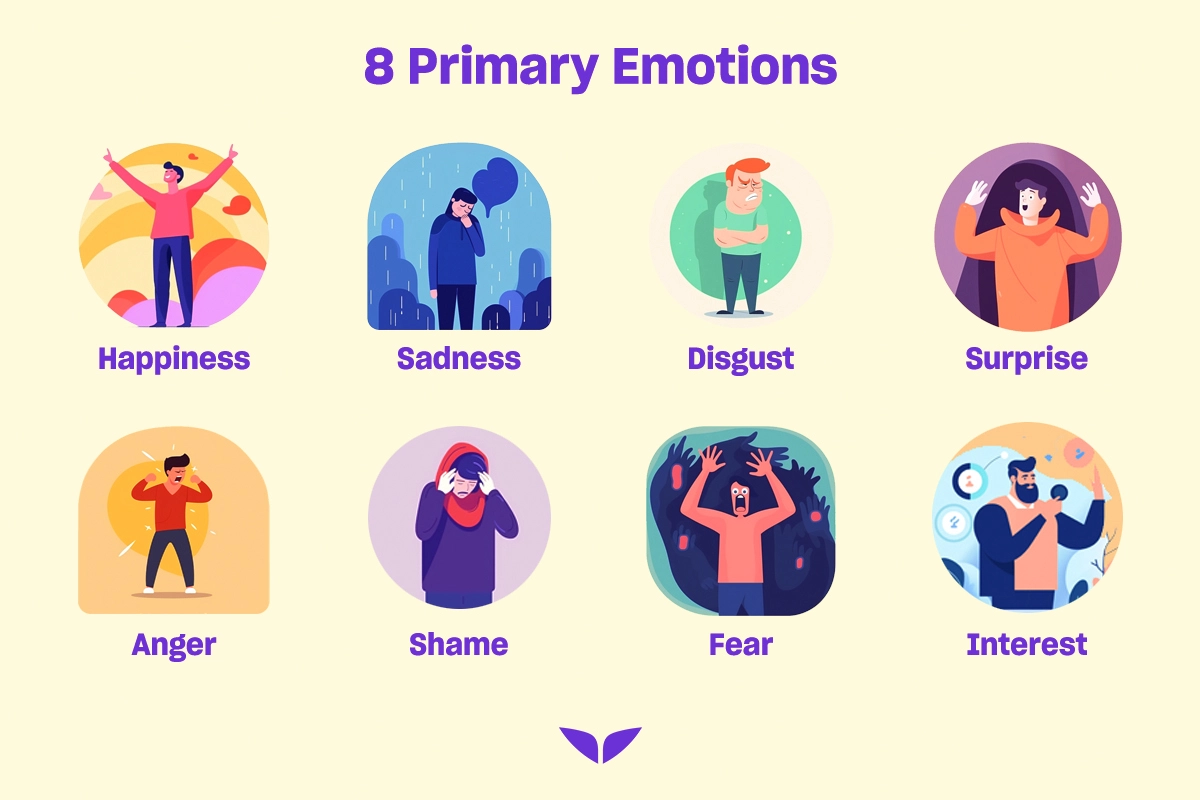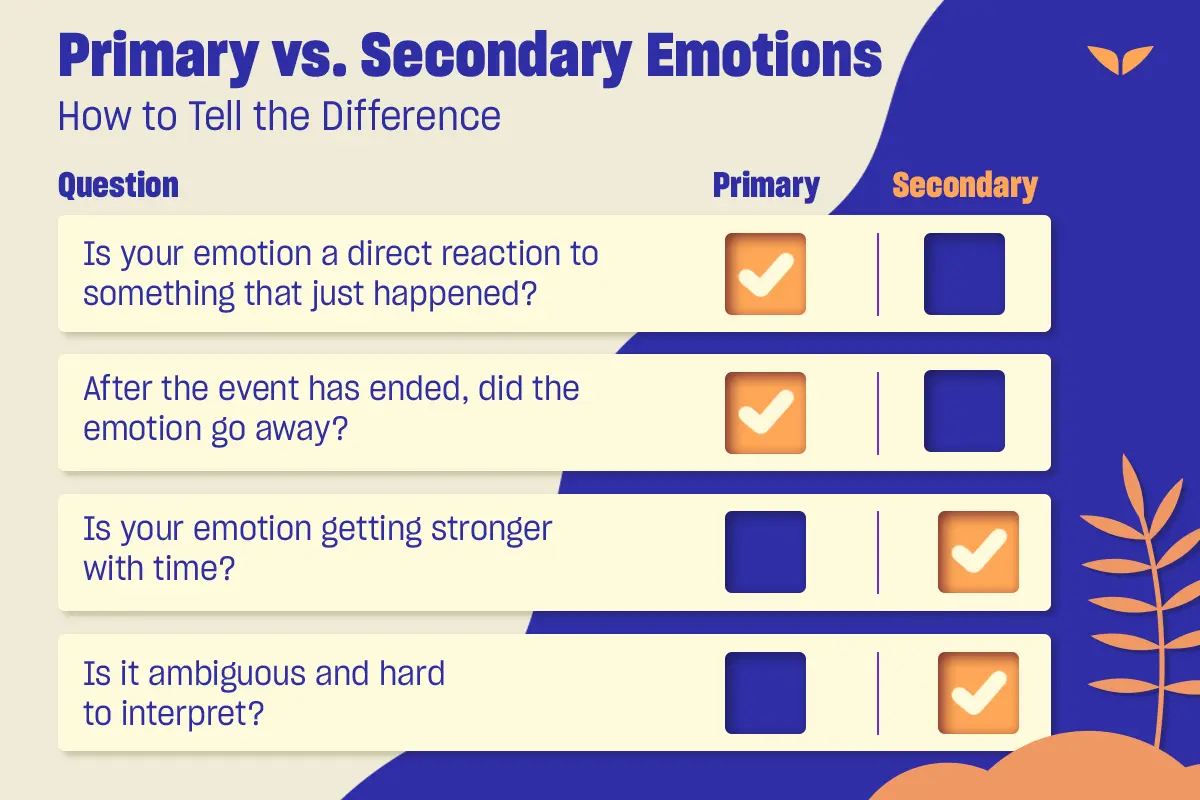Welcome to the world filled with all types of emotions, where feelings run right, left, and center and often seem to come out of nowhere. Think about the rush of joy after achieving a goal, the warmth of love when family and friends surround you, or the sharp sting of disappointment when things don’t go quite as you planned.
Emotions can be of many kinds, but each carries its own beauty and significance.
Jon and Missy Butcher, creators of Lifebook and trainers of Mindvalley’s Lifebook Online Quest, put it this way: “The energy that actually shapes the world springs from emotions.” And the more you understand that concept, the more you can tap into your creative power and design the life of your dreams.
Where do emotions come from?
Your emotions are universal responses to positive or negative triggers. The cognitive appraisal theory in psychology says that every human being experiences emotions. However, their frequency and intensity may differ from one person to the next based on their personal encounter.
Emotions are body wisdom. They are innate intelligence, signals from deep within us that come up in response to some aspect of reality that we may not even be conscious of. Emotions are there to tell us something.
— Jon Butcher, trainer of Mindvalley’s Lifebook Online Quest
The stimulus that generates emotions can be internal or external:
- Internal: a thought or a physical sensation
- External: an event or encounter with someone else
Emotions act like your own personal dashboard, giving you a quick readout of what’s going on beneath the surface. They rise to send you a message, like a unique guide pulling you towards the things that make you happy and away from the ones that don’t.
Primary vs. secondary emotions
Given that we, as humans, have numerous thoughts and feelings, it begs the question: How many types of emotions are there? It’s not so black and white, as different types of emotions fall into distinct categories. However, to keep things simple, let’s focus on the main ones.
Primary emotions are those that you experience during significant events. They come off as intense and overwhelming, but their energy dissipates quickly.
Take, for example, those times when you cried watching a heart-breaking movie (everyone’s seen Hachiko, right?), and you probably felt an intense sense of sadness. But once the movie was over, that feeling started to fade away.
Over time, primary emotions evolve into secondary emotions. And here’s where people often get confused.
Think of it this way: when you start painting, you prepare a few colors at the beginning. But as you mix them together, you end up with a whole spectrum of shades.
That’s what secondary emotions are, in a nutshell.
The farther they get from the initial event, the less powerful the primary emotions become. But they don’t just disappear; instead, they blend together and turn into other, more complex emotions.
What are the 8 primary types of emotions?
After understanding the complexity of how much you can feel, you may wonder: What are the different types of emotions?
Psychologist Robert Plutchik introduced the theory of the eight primary emotions:
- Anger
- Fear
- Happiness
- Sadness
- Interest
- Surprise
- Disgust
- Shame

As mentioned, they are part of your primal instinct, so they can be very intense. Here’s a quick dive into how each primary emotion manifests:
1. Anger
You’ve probably heard the expression “blind rage” before or even felt it take control due to an intense trigger. That’s anger—a powerfully overwhelming emotion that can trigger your body’s fight or flight response.
This is how it commonly shows up:
- Raising your tone or yelling
- Sweating or turning red
- Heavy breathing
- Turning to aggressive behavior (e.g., hitting, breaking, or throwing objects)
- Feeling out of control
A 2019 statistic shows that 7.9% of the population in the United States is dealing with intense, inappropriate, or poorly controlled anger issues. However, the more extreme cases tend to show up when it comes to psychopathologies.
Even though anger comes across as an emotional experience most people don’t want to have, Jon explains in the Lifebook Online Quest that “anger usually tells us our boundaries have been violated in some way.”
So ask yourself what kind of message the anger is trying to send you next time you get fired up. You may be surprised by the many ways this emotion is trying to protect you.
2. Fear
Similar to anger, your fear can trigger your body’s fight-or-flight response. Some people freeze up when experiencing intense fear.
Here are some effects that fear can have on the human body and mind:
- Accelerated breathing and heartbeat
- Attempts to hide or run away
- Overthinking
- Muscle tension
- Feelings of hopelessness
The truth is, people can experience fears in different ways. For some, it may be an emotional response to thoughts about a potential threat, which usually turns to anxiety. Others might thrive in fear-inducing situations (like those who enjoy the adrenaline of extreme sports).
No matter what role fear plays in your life, Jon highlights that “it can tell you to use caution, be careful, be on guard, run away, or move on.” Whatever the significance is for you, it’s truly important to connect to its wisdom without letting it control you.
3. Happiness
Aristotle once said, “Happiness is the meaning and purpose of life, the whole aim and end of human existence.” And there’s truth in that.
Most people strive for happiness. And the core reason for what they want to achieve, explore, experience, or acquire is to harness more of this positive emotion.
“At the end of the day, pretty much everything we do at Lifebook,” explains Jon, “all the thinking, all the reflecting, the planning, the goal setting—pretty much everything we do is designed to generate more happiness.”
Here’s how this type of emotion shows up:
- Feelings of joy, laughter, and excitement
- Freedom of speech, a sense of liberty and easiness
- Overall optimism and a positive outlook on life
- Sense of hope
- Smiling, laughing, and feeling relaxed
Research shows that laughter, joy, hope, [and] feelings of love and happiness—these feelings are literally medicinal. They heal your body. They’ll cure you.
— Jon Butcher, trainer of Mindvalley’s Lifebook Online Quest
4. Sadness
Everyone experiences a certain intensity of sadness, and it can take the form of heartbreak, disappointment, grief, or even depression. It’s an emotion that can make you feel like you’re stuck in a pit, unable to climb out.
It can be expressed through:
- Crying
- Feeling lethargic
- Quietness
- Isolation
- Low energy and negativity
Sadness is inherently part of life’s ups and downs, but the way you choose to channel it toward your growth is up to you.
“Pain and suffering are an absolutely inevitable part of the human experience,” says Jon. “We all find our own unique ways to process them, whether consciously or subconsciously.”
However, this emotion can also be the greatest transformational tool you’ll ever encounter on your healing journey. And when you build enough resilience to use the meltdowns as catalysts for change, you can slowly learn to be grateful for the moments of pain, too.
5. Interest
Interest can manifest itself as a sudden curiosity or passion. This emotional experience can actually act as an intuition towards those things that could lead you to feel happier and more content.
It shows up as:
- Curiosity in trying out new experiences
- Courage to get out of your comfort zone
- Openness to change
- Willingness to meet new people
- Receptivity to new interesting information
In her book, Big Magic, Elizabeth Gilbert states, “Curiosity is our friend that teaches us how to become ourselves.” It’s about those seemingly out-of-nowhere moments when you get a hint that you should see something, do something, or be somewhere.
6. Surprise
Life tends to be unexpected, and we can’t always have control over what’s coming next. And this is usually when feeling surprised hits people the most.
Most likely, you, too, have been caught off guard by something unexpected.
Maybe your best friend threw a surprise party, and you felt amazed to see all of your friends gathered together. Or maybe you came back from the mall and found a parking ticket on your window.
Be it positive or negative, surprise can manifest through:
- Widening the eyes
- Opening your mouth
- A sense of awe
- A rush or either excitement or shock
- Screaming out loud
As Jon points out, “You can exercise control over your emotions.” And while it’s true that you cannot predict everything that life throws at you, you can choose how you respond to those shocking moments.
7. Disgust
Disgust is often described as a protective emotion. Research suggests that it can act as your body’s defense mechanism to pull away from things that may carry health-threatening diseases.
But it isn’t just limited to physical sensations. It can also be triggered by moral violations, like seeing someone litter or hearing about a politician’s scandal.
In these cases, disgust can be a powerful motivator for change. It can inspire us to take action and speak out against injustices.
This is how it expresses itself:
- Wrinkling the nose
- Curling the upper lip
- Extreme physical reactions, such as throwing up
- Feeling as if your moral principles have been violated
- Wanting to run away from the object of disgust
Of course, not all forms of disgust are helpful or productive. Sometimes, our sense of disgust can be based on irrational fears or biases, like how some people feel disgusted by certain foods or places without any logical reason.
8. Shame
You know that feeling of guilt or embarrassment when you’ve done or failed to do something? It can be triggered by a wide range of experiences, from social rejection to traumatic experiences and personal failures. That’s shame.
It can look like:
- Inability to express emotions
- Social isolation
- Profound feelings of regret
- Perfectionism
- Overwhelming anxiety
This emotional experience can induce those limiting beliefs that you’re not good enough as you are and should strive for perfection. Additionally, intense feelings of shame can alter our perception of reality and draw us to situations that deepen our beliefs of unworthiness.
What are secondary emotions?
Secondary emotions stem from one or more primary emotions. They can also come about as a result of how you feel about a primary emotion. For example, after you get angry about something, you might realize that this emotion was uncalled for, and that can lead to feelings of shame or guilt about it.
Secondary emotions tend to linger for much longer than primary emotions and can sometimes overshadow their predecessors. This can be quite harmful, as it can help you avoid the root of your issues.
How to tell the difference
Sometimes, knowing the difference between the two types of emotions can be hard. So dividing them into primary and secondary emotions is a tool that can help you understand the way you feel.
Here’s how you can tell the difference:

High emotional intelligence allows you to become very resourceful, grounded, [and] solid. The willingness to experience your feelings has direct healing power. It clears the way for you to begin to understand and deal with just about any issue, any wound, [or] any hurt in your life.
— Jon Butcher, trainer of Mindvalley’s Lifebook Online Quest
Why is it important to acknowledge your emotions?
Your emotional recognition ability, as well as your so-called skill “to feel it all,” increases your emotional intelligence and your sense of connection to yourself. There’s nothing more empowering than being at one with your emotions and feeling alive because of them.
A 2018 study has found that turning your emotions into words will decrease the emotional charge surrounding the experience itself. And to make things a little easier, a comprehensive list of types of emotions list can come in handy.
As Jon puts it, “If you have a healthy, open relationship with your emotions, if you acknowledge, accept, and honor them, if you treat them as tools of awareness, you’ll have a built-in barometer that’s going to help you make good decisions in life.”
Feel your greatness
When you let go of the resistance to feel your emotions, you may find your greatness arises from within.
The types of emotions and feelings you experience in your life can lead you to uncover your best self. And when you truly realize the importance of nurturing your high-frequency emotional states, a little guidance might be helpful for you along the way.
You can find that at Mindvalley. In the Lifebook Online Quest, you’ll have access to transformational insights and powerful lessons on taking responsibility for your emotions by Jon and Missy Butcher.
To get a taste of the magic Lifebook brings into your life, you can sign up for the free masterclass and see for yourself how this wisdom may transform your existence.
Welcome in.









